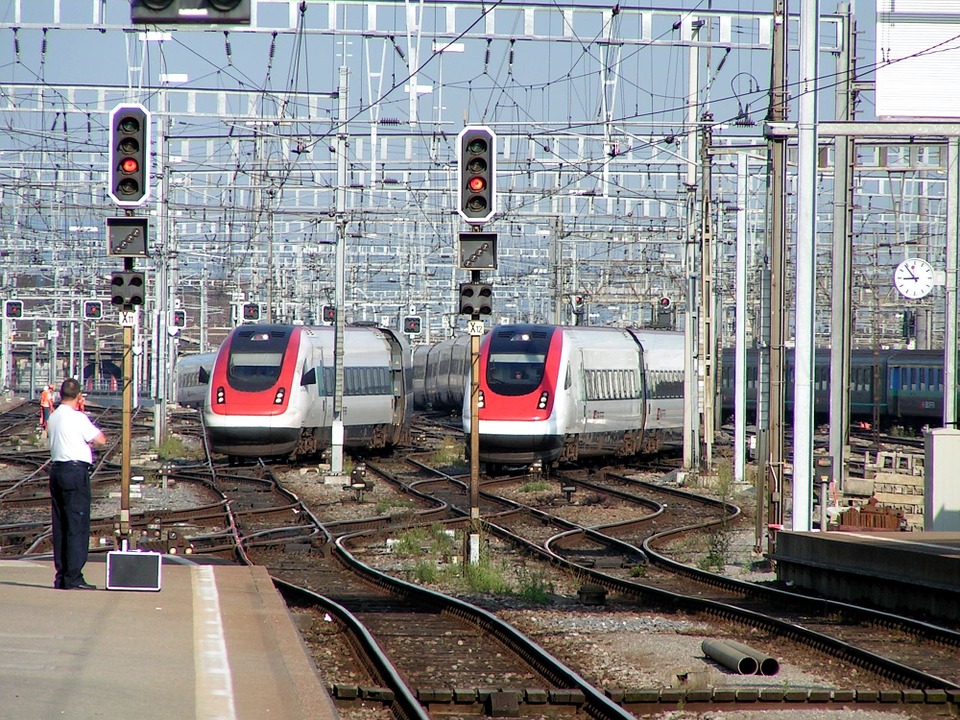
Yesterday evening, Andrew Nash and Ulrich Leister, transit consultants from Europe, explained to an audience at SPUR's Oakland location what California needs to do to make its transit and intercity rail as user-friendly as it is in Switzerland and Denmark. "The most important thing is the service," said Leister a railroad consultant and CEO for the North American operations of SMA, who is also working to help California develop its statewide rail projects. "And that the product is something to be used by the public."
That may seem obvious, but Leister explained that transportation agencies get too focused on vehicle types and moving trains and forget that the customer just wants to get where they want to go, easily, consistently, and quickly. "It's hard to make public transportation as flexible and easy to use as the private car, but on reliability, time and money...public transportation can outperform," he said.
He said that agencies need to design infrastructure according to customer needs. For example, it's nearly impossible to give anyone a direct ride on one vehicle type from point A to B. That means transfers have to be fast and simple. So in Zurich, which he used as an example, the priority is facilitating seamless transfers throughout the system, through a "hub-pulse" approach.

He cited the example of MacArthur BART station, where southbound trains pull along side each other and hold as passengers scramble back and forth between two trains. But in Switzerland, this concept is expanded to intercity and regional trains--buses and trams are part of that transfer system too. He said that first the buses will pull up to a railway station, and then the trains assemble from multiple destinations with easy, cross platform transfer. Then the trains leave. Then the buses leave "It's eight minutes between the first train coming in and first train leaving," he said, with it all coordinated like a complex dance.
He stressed that train and bus services have to be consistent. That means you can't have hour-long intervals late at night, because passengers must be able to rely on there always being a train available to get home when they want to. He said this is more efficient, since it eliminates having trains sitting around doing nothing outside of rush hour. It's also essential to have easily understood schedules, so trains leave every 15 minutes, or every 30 minutes, without having huge gaps in the schedule. "It's a pulsed regional system," he explained, where trains and buses arrive at destinations at regular intervals, all day long, and even into the late evening.

It's also important to have a single customer interface, so someone doesn't have to read an AC Transit bus schedule, and then figure out which BART train to take, and then transfer to Amtrak, all with long, unreliable waits and different tickets. All of that must be integrated. "This state is really investing a lot of money in public transportation--if we focus on developing an attractive network...we have to get those soft issues out of the way," he said.
But how? Obviously, an integrated pulse-hub system takes a level of reliability and investment. And with the Bay Area's multiple transit agencies, the "soft issues" have historically been exceedingly hard to solve.
Nash got into the technological and business hurdles.
For one, it means upping the level of precision. "Customers want to get to work, or the concert, or wherever on time," he explained. To achieve that, railroads can't just aim to get a train to arrive at 7:05. It means the doors on the train have to close at much more precise times, within milliseconds. That's accomplished with electronic controls and by monitoring of services. So if a train is consistently closing its doors 20 millisecond too late, they can adjust the schedule. "We want to describe every activity precisely with a time, and that way people know what to do, so we can monitor if people are doing what they need to do at the right time and adjust accordingly."
In other words, by keeping tabs on things at a truly granular level, trains start to operate more reliably. And then customers get to their jobs, concerts, social activities when they expect to.
They also have flow charts that tell operators exactly what to do if a particular train is late. Rather than having trains wait because a late train is blocking an assigned platform, the operators immediately have a plan "B" to get the rest of the trains where they need to go, to avoid a rippling effect that delays the whole system.
Nash also rejects the idea that there can't be integrated bus and rail ticketing because the Bay Area has multiple operators. "San Francisco has 25 or 26 agencies, but Zurich has 42!" he said. But they have an agency that sits atop and just issues the tickets and charges the fares. "It brings these organizations together...all the transit operators and companies operating trains, trams, boats are all hired by the 'parent' company, and paid by them, rather than directly by the customer," said Nash. And that parent operator dictates that the individual agencies must operate to a minimum standard or they don't get paid.
That said, both consultants agreed that California needs huge investments in infrastructure to achieve Swiss, Japanese or Danish levels of timeliness and consistency and reliability. But they've already made some progress. "We did a project in Southern California on the San Bernardino line, which is mostly single track," said Leister. "On-time performance went from 67 percent to over 90 percent with a six minute threshold. It certainly is possible in North America."

For more events like these, visit SPUR’s events page.





